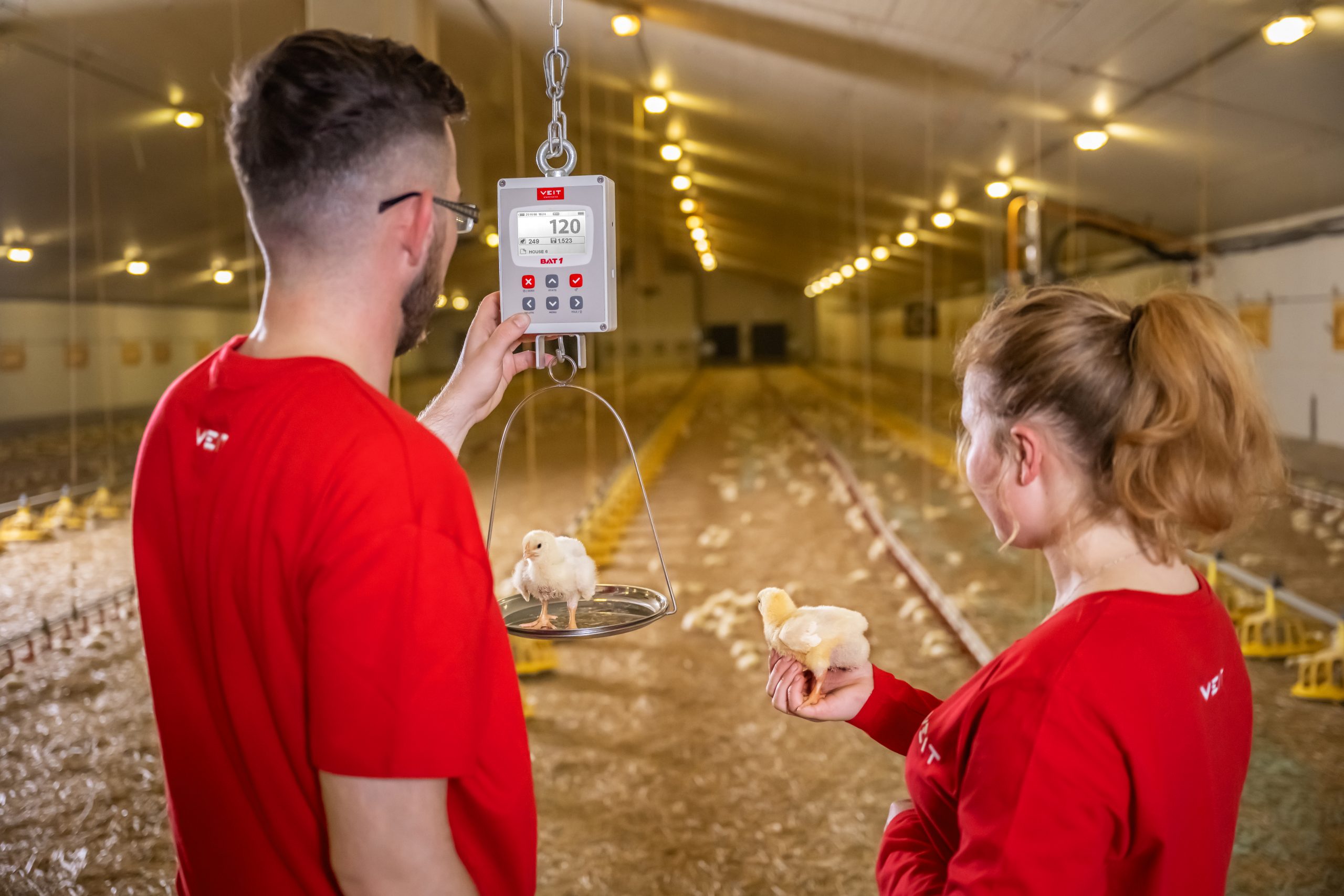Modern poultry farming demands precise management to stay profitable. When you combine accurate weight data with targeted feeding programs, you create a powerful tool for optimizing your flock’s feed conversion ratio (FCR) and maximize your return on investment.
Understanding FCR and Its Impact on Profitability
The meaning of FCR in poultry is simple yet critical: it measures how efficiently your birds convert feed into body weight. An improved FCR means better efficiency and higher profits. Research shows that a 2% increase in flock weight variation can worsen FCR by 0.3 points (Vasdal et al., 2019). This means your birds need an extra 0.3 kg of broiler feed to gain the same 1 kg of weight.
Weight uniformity directly affects your bottom line. When birds have consistent weights, they respond better to feeding changes and reach their genetic potential more easily.
Creating Your Data-Driven Feeding Strategy
Phase-Based Feeding Approach
Different growth phases require specific types of broiler feed:
Starting Phase (0-10 days): High-density starter feed with 23% crude protein provides the foundation for healthy growth (Aviagen, 2022a). Your broiler chicken feed should focus on digestibility during this critical period.
Growing Phase (11-21 days): Broiler grower feed with adjusted protein levels (21.5%) supports steady development (Aviagen, 2022a). Monitor weight data weekly to ensure birds stay on target.
Finishing Phase (22+ days): Finisher feeds optimize final weight gain while controlling costs. This is where precise broiler feed conversion data becomes most valuable.
Using Weight Statistics for Feed Decisions
Regular weighing helps you make informed decisions about what to feed broiler chickens and when. Key metrics include:
– Average weight per bird
– Weight uniformity (coefficient of variation)
– Growth rate trends
– Feed intake patterns
When weight data shows poor uniformity, you can adjust feeding programs and other factors immediately. This might mean adjusting light exposure, ventilation, feed and water distribution and potentially even the population density inside the poultry house.
Optimizing Feed Consumption Through Data Analysis
Understanding how much feed a broiler chicken will eat requires tracking both individual bird weights and flock-wide consumption patterns. A broiler performance guide from an industry leader shows that Ross 308 broilers should achieve an FCR of 1.343 by day 32 under optimal conditions (Aviagen, 2022b). A typical broiler chicken feed consumption chart shows increasing intake as birds grow, but actual consumption varies based on genetics, environment, and feed quality.
Smart farmers use weight data to predict feed needs accurately. This prevents overfeeding heavy birds while ensuring lighter birds get adequate nutrition. The result is improved overall broiler feed conversion and reduced waste.
Practical Implementation Steps
– Establish baseline measurements: Weigh representative samples weekly
– Calculate FCR regularly: Use accurate weight and feed data
– Adjust feeding programs: Modify broiler chicken feed based on performance
– Monitor results: Track improvements in efficiency and profitability
Modern weighing systems make data collection easier and more accurate. Automated scales like the specialized BAT2 poultry scales provide consistent measurements without human error, while data management software like BAT Cloud helps you spot trends quickly.
Maximizing Your Investment
Combining precise weight data with targeted feeding creates measurable improvements in flock performance. Farmers using this approach report better FCR, reduced mortality, and higher profits per bird.
The key is consistency in data collection and quick responses to what the numbers tell you. When you understand exactly how your birds are growing, you can fine-tune their nutrition for maximum efficiency.
Your investment in accurate weighing and data analysis pays dividends through improved broiler feed conversion and reduced feed costs. This systematic approach transforms raw statistics into actionable insights that drive profitability.
- Vasdal, G., Vas, J., Newberry, R.C., & Moe, R.O. (2019). Effects of environmental enrichment on activity and lameness in commercial broiler production. Journal of Applied Animal Welfare Science, 22(2), 197-205.
- Aviagen. (2022a). Ross 308: Broiler nutrition specifications. Aviagen, Huntsville, Alabama, USA. Retrieved from http://en.aviagen.com/assets/Tech_Center/Ross_Broiler/RossBroilerNutritionSpecs2019-EN.pdf
- Aviagen. (2022b). Ross 308: Broiler Performance Objectives. Aviagen, Huntsville, Alabama, USA. Retrieved from https://aviagen.com/assets/Tech_Center/Ross_Broiler/RossxRoss308-BroilerPerformanceObjectives2022-EN.pdf
